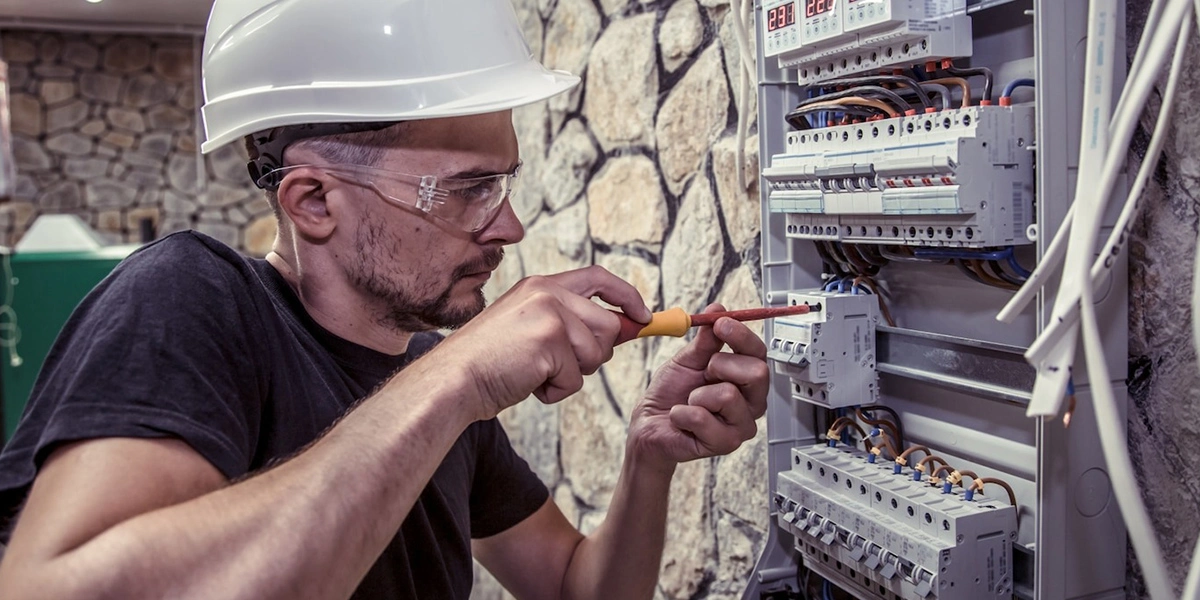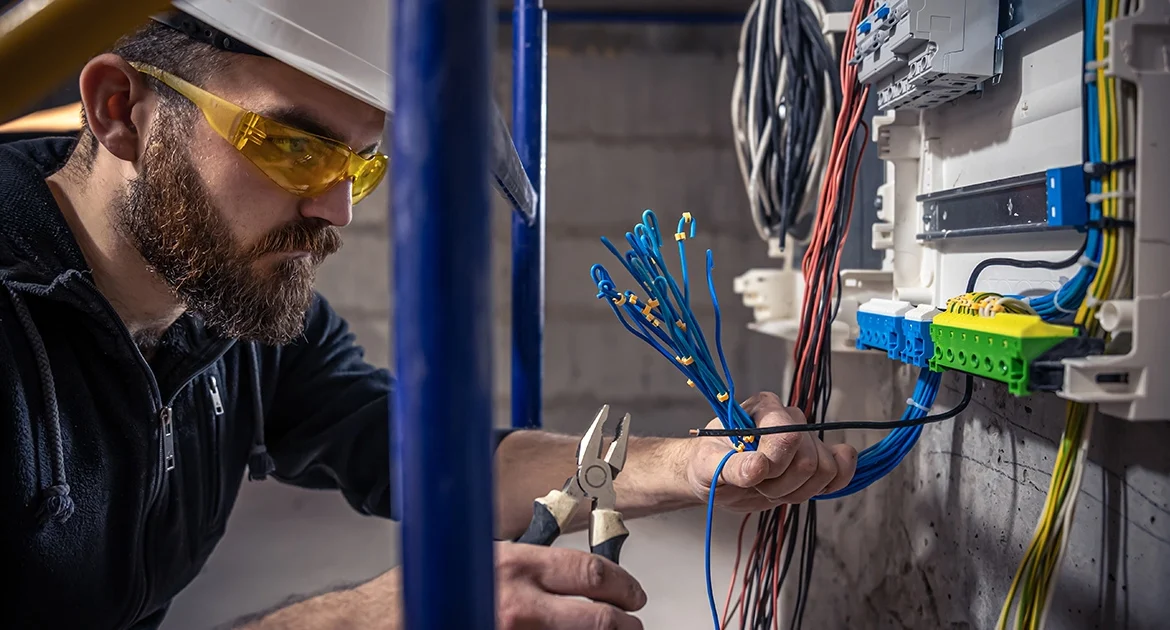When it comes to maintaining the safety and efficiency of electrical installations, property owners and landlords in the UK must adhere to strict regulations. One critical aspect of compliance is the Electrical Installation Condition Report (EICR). This comprehensive guide explains the purpose of EICRs and their importance and dives into the fault codes that property owners and landlords should understand. Keywords such as “EICR code examples” and “what does EICR mean” will be thoroughly addressed.
What Does EICR Mean?
An Electrical Installation Condition Report (EICR) is an official document produced after an inspection of a property’s electrical systems and installations. The report assesses the safety of fixed electrical installations, ensuring they comply with British Standards (BS 7671).
EICRs are mandatory for landlords under UK law to protect tenants from electrical hazards and ensure the property is fit for habitation. Homeowners can also use EICRs to ensure their property’s electrical systems are in good condition.
Why Are EICRs Important?
Electrical faults can lead to serious hazards, including fires, electrocution, and costly repairs. By obtaining an EICR, property owners can:
- Identify Potential Issues: The report highlights any faults, degradation, or non-compliance in the electrical systems.
- Maintain Safety: EICRs ensure that installations are safe for continued use.
- Meet Legal Requirements: For landlords, the Electrical Safety Standards in the Private Rented Sector (England) Regulations 2020 mandate that electrical installations must be inspected at least every five years.
- Prevent costly repairs: Early identification of problems can prevent more significant issues down the line.

EICR Fault Codes Explained
When an EICR is conducted, the electrical inspector assigns codes to any issues identified. These codes categorise the severity of the problem and recommend appropriate action.
EICR Codes Examples
The fault codes are as follows:
- Code C1: Immediate Danger
-
-
- What it means: There is a risk of immediate danger to life or property.
- Action required: The issue must be rectified immediately.
-
- Examples:
-
-
-
- Live parts exposed due to damaged fittings.
- Incorrect polarity in sockets leads to electrical shock risks.
- Outcome: The electrical system is deemed unsafe for continued use until repairs are completed.
-
-
- Code C2: Potential Danger
-
-
- What it means: There is no immediate risk, but the issue could become dangerous if left unaddressed.
- Action required: Repairs should be carried out as soon as possible.
- Examples:
- A lack of proper earthing for circuits.
- Damaged or deteriorating insulation.
- Outcome: While the system can still be used temporarily, it’s highly recommended to address the faults quickly.
-
- Code C3: Improvement Recommended
-
-
- What it means: The installation is safe but could be improved to enhance safety or compliance with current standards.
- Action required: upgrading is recommended but not mandatory.
- Examples:
- Outdated wiring that doesn’t meet the latest BS 7671 standards.
- Missing labels on consumer units.
- Outcome: No immediate danger, but improvements are advised.
-
- FI: Further Investigation Required
-
- What it means: The inspector could not determine the condition or safety of a particular element without further investigation.
- Action required: A follow-up inspection or test is necessary.
- Examples:
- Unclear results during insulation resistance tests.
- Suspicious signs of overheating that require further inspection.
- Outcome: The system’s safety cannot be guaranteed until the issue is clarified.
Common Issues Highlighted in EICRs
Understanding potential issues that may trigger EICR fault codes can help property owners and landlords prepare for inspections. Some common problems include:
- Outdated Consumer Units
- Old fuse boxes may not comply with modern safety standards.
- Code C3 is often assigned to installations lacking residual current devices (RCDs).
- Damaged Wiring
- Worn-out or exposed wiring can lead to faults.
- Depending on the severity, this could be a C2 or C1 issue.
- Overloaded Circuits
- Circuits drawing excessive currents can overheat and pose a fire hazard.
- Typically flagged as C2.
- Improper Earthing and Bonding
- Earthing prevents electrical shocks, and bonding connects metal components to minimise risk.
- Missing or faulty earthing/bonding often results in a C2 code.
- DIY Electrical Work
- Unprofessional alterations to wiring or installations may fail safety checks.
- These are typically classified as C2 or C1, depending on the risk.
How to Interpret an EICR Report
After the inspection, the EICR will provide a summary of findings, including:
- Observations: Details of all issues discovered.
- Fault Codes: Assigned codes for each issue.
- Overall Assessment: Whether the electrical installation is satisfactory or unsatisfactory.
If the report is deemed unsatisfactory, landlords must carry out remedial work. Once completed, a follow-up inspection will confirm compliance.
Legal Requirements for Landlords
In the UK, landlords are legally required to:
- Obtain an EICR at least every five years.
- Provide tenants with a copy of the report within 28 days.
- Rectify any issues identified as C1 or C2 within 28 days or less, depending on the severity.
- Submit evidence of repairs to the local council if requested.
Non-compliance can result in fines of up to £30,000, making it crucial for landlords to take their EICR obligations seriously.
Preparing for an EICR Inspection
To ensure a smooth inspection process, landlords and property owners can take the following steps:
- Review Past Reports: Understand any previous issues and ensure they’ve been resolved.
- Conduct Basic Checks: Look for visible issues like exposed wires or damaged sockets.
- Hire a qualified electrician. Ensure the inspector is registered with a body such as NICEIC or NAPIT.
Costs of an EICR Inspection
The cost of an EICR varies depending on factors such as property size and location. On average:
- A small flat may cost £100–£150.
- Larger houses may range from £200–£300.
Investing in regular EICRs can save significant costs in the long term by preventing electrical hazards and ensuring compliance.
Understanding “what does EICR mean” and being familiar with “EICR code examples” is essential for property owners and landlords to ensure electrical safety and meet legal requirements. EICRs not only protect tenants but also safeguard properties from potential electrical hazards.
By learning the implications of each fault code, landlords can take proactive steps to rectify issues and maintain compliance. Regular inspections, timely repairs, and employing qualified electricians are key to keeping properties safe and tenants satisfied.
For landlords and property owners, staying informed about EICRs is not just a legal responsibility—it’s a commitment to safety and quality.


